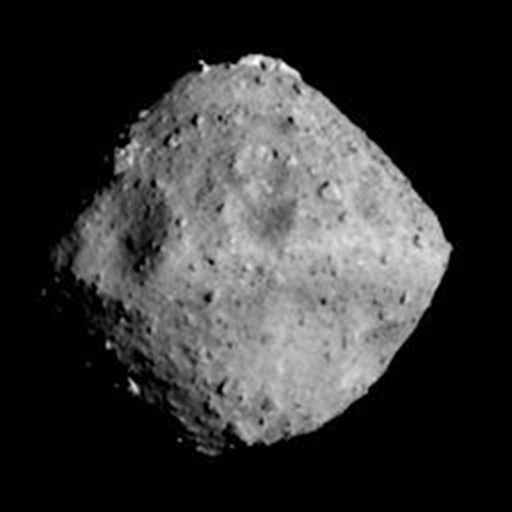Japan Learns About Ryugu Asteroid’s Composition After Shooting It With Cannonball

KEY POINTS
- Ryugu is a kilometer-sized potentially hazardous object
- JAXA's Hayabusa2 spacecraft shot Ryugu with an impactor
- The impact provided information about Ryugu's composition
The Hayabusa2 spacecraft launched by the Japan Aerospace Exploration Agency (JAXA) recently fired a cannonball at the asteroid Ryugu. It was part of the spacecraft’s experiment to study the asteroid’s composition.
Ryugu is a near-Earth potentially hazardous asteroid that measures almost a kilometer long. Since 2018, this asteroid has been the subject of JAXA’s sample-return mission. Through the Hayabusa2 spacecraft, the agency has been getting a lot of valuable information regarding the massive asteroid.
Recently, Hayabusa2 carried out an experiment to learn more about the composition of Ryugu. Details of the experiment were presented in two different studies published in the journals Science and Nature.
The experiment involved firing a copper cannonball at the asteroid. The cannonball, known as the Small Carry-on Impactor (SCI), was about as big as a tennis ball and weighed around 2 kilograms. It hit Ryugu with an impact velocity of about 4,475 miles per hour.
As the SCI collided with Ryugu, Hayabusa2 monitored the clouds of plume generated by the impact using its cameras. After the cloud of debris cleared, JAXA discovered that the impactor created a crater with an elevated rim on the asteroid that’s about 47 feet wide. Within the crater is a conical pit about 10 feet wide and 2 feet deep.
Given the size of the SCI, JAXA’s scientists were surprised that it was able to create such a large crater on the surface of Ryugu. They explained that the growth of the crater as well as the plume was limited by the asteroid’s gravity and not by its surface strength. This suggests that Ryugu has a weak surface that’s similar to loose sand.
This characteristic coincides with the features of other C-type asteroids, which is the most common type of space rock in the solar system. C-Type or carbonaceous asteroids are remnants of the early stages of the Solar System. They came from the same materials that formed the Sun and other planets 4.6 billion years ago.
“Fragile, highly porous asteroids like Ryugu are probably the link in the evolution of cosmic dust into massive celestial bodies,” Matthias Grott, the lead author of the study published in Nature, told CNN.
“This closes a gap in our understanding of planetary formation, as we have hardly ever been able to detect such material in meteorites found on Earth,” he added.
© Copyright IBTimes 2024. All rights reserved.




















